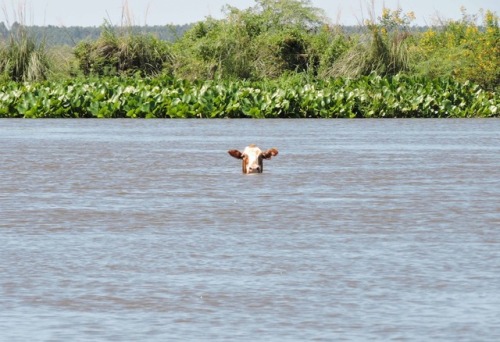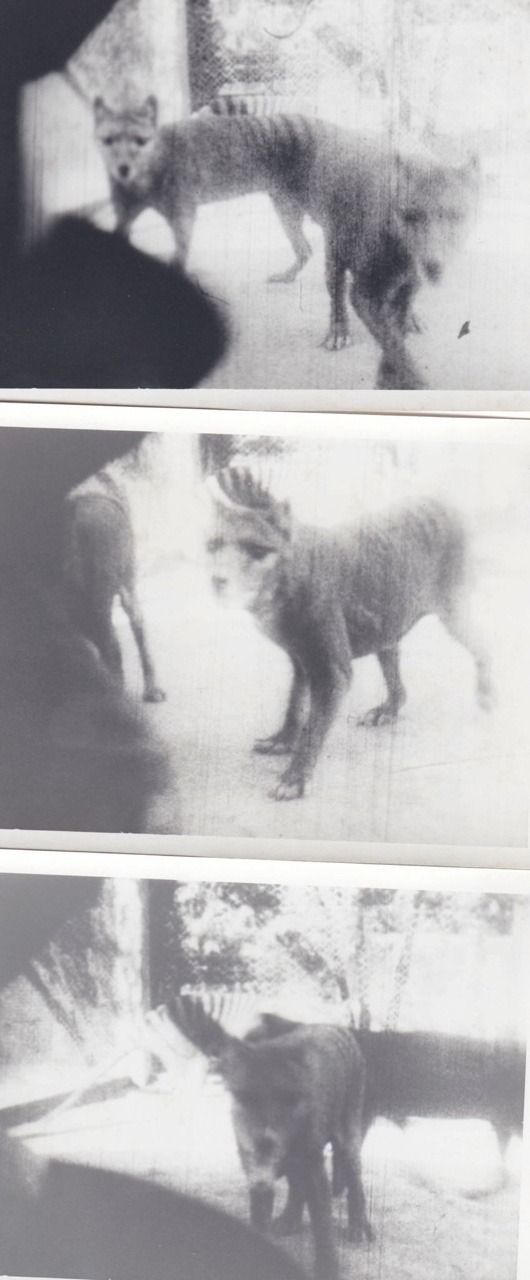Bessie (Lake Erie Cow Monster Or Lorain Ocean’s Lake Monster)

Bessie (Lake Erie Cow Monster or Lorain Ocean’s Lake Monster)
Described as looking like a cow and having multiple heads in some sightings (yes you read that correctly). Sightings around Lake Erie started in 1907 and have continued ever since with sometimes basic or stranger description of the creature. One of the weirder descriptions was made by two brothers in 1937 as a creature made up of a hundred cows combined into one with arms.
More Posts from Jackasslope and Others
Jackalopes are my favorite cryptid, so I decided to stitch one featuring the night sky!



The term Blobsquatch is used when an image is taken of a supposed Sasquatch but nothing can be deciphered out of the vaguely human-shaped “blob”. These blobs can commonly be debunked as dead trees, tree stumps, or shadows. The term was first used on Bigfoot Forums in the early 2000s by a man by the name of Vito Quaranta.

Name: Barghest, Barguest
Area of Origin: Northern England
Prevalent in Northern English folklore, the Barghest is a monstrous black dog, with fiery eyes, large teeth and claws, though the name has been known to refer to ghosts or household elves in other regions of the country. The word “Ghost” was pronounced “Guest” in Northern England, and the etymology of Barghest is thought to be the combination word, Burh-ghest or “Town-Ghost”. Similar to other mythical Black Dogs like the Black Shuck, Grim, Padfoot, Gwyllgi and Gytrash, the Barghest is believed to be an omen of death, foretelling the passing of an individual by laying on or near their doorstep. In some tales, the dog is but one form the entity can shapeshift into, with other appearances being that of a headless man or woman, a white cat or a rabbit. They are said to attack lone travelers in the countryside as well as the narrow alleys in those of the old English cities.


Some beautiful 35mm stills from a 1928 film of three thylacines residing at the Beaumaris Zoo, Hobart. Stills taken by James Malley.




Colourised footage of Benjamin, the last know Tasmanian Tiger (Thylacine).
Benjamin died on September 7th, 1936 in Hobart zoo. It is believed that he died out of neglect, as he was locked out of his shelter and was exposed to the searing hot sun and freezing cold night of Tasmania.
The Thylacine was one of the last large marsupials left on Australia (the other being the Kangaroo) after a great extinction event occurred around 40 thousand years ago. This extinction event, caused mainly by the arrival of humans, wiped out 90% of Australia’s terrestrial vertebrates, including the famous Megafauna.
The Thylacine was around 15-30kg (33-66lbs), were carnivorous, and had numerous similarities to other species like dogs, despite not being related and purely by chance, in a phenomenon known as convergent evolution (just like the ability to fly of bats and birds, despite following different evolutionary paths). Not only that, they could open their jaws up to 120 degrees, could hop around on two legs like a kangaroo, and both males and females had pouches.
Lastly in a cruel twist, the Tasmanian government decided to protect the Thylacine - just 59 days before the last one died, in a very notable case case of “Too little too late”. To date, many biologists believe that there are still Thylacine roaming the wild plains of Australia.



Here’s my little thylacine figurines! I’ve just finished stringing a bunch. Theyre kind of BJDs (they’re smaller than the more articulated BJD thylas I posted the other day). I’ve just listed a few on my website: www.palaeoplushies.com
-
 missgelly liked this · 4 years ago
missgelly liked this · 4 years ago -
 yeetingmyselftothemoon liked this · 4 years ago
yeetingmyselftothemoon liked this · 4 years ago -
 bustedshit reblogged this · 5 years ago
bustedshit reblogged this · 5 years ago -
 thingsofbronze liked this · 5 years ago
thingsofbronze liked this · 5 years ago -
 cultix liked this · 5 years ago
cultix liked this · 5 years ago -
 thethingsiveseen-photography liked this · 5 years ago
thethingsiveseen-photography liked this · 5 years ago -
 maxlee666 liked this · 5 years ago
maxlee666 liked this · 5 years ago -
 l8rhader liked this · 5 years ago
l8rhader liked this · 5 years ago -
 pearlposts reblogged this · 5 years ago
pearlposts reblogged this · 5 years ago -
 straymongrel liked this · 5 years ago
straymongrel liked this · 5 years ago -
 annoyinglyhumongousfart liked this · 5 years ago
annoyinglyhumongousfart liked this · 5 years ago -
 learningthespiriteddance liked this · 5 years ago
learningthespiriteddance liked this · 5 years ago -
 liddlelady reblogged this · 5 years ago
liddlelady reblogged this · 5 years ago -
 liddlelady liked this · 5 years ago
liddlelady liked this · 5 years ago -
 kuroko26 liked this · 5 years ago
kuroko26 liked this · 5 years ago -
 jackasslope reblogged this · 5 years ago
jackasslope reblogged this · 5 years ago -
 battrogue liked this · 5 years ago
battrogue liked this · 5 years ago -
 rzzy liked this · 6 years ago
rzzy liked this · 6 years ago -
 lynxskulls reblogged this · 6 years ago
lynxskulls reblogged this · 6 years ago -
 theaceonthecase78 liked this · 6 years ago
theaceonthecase78 liked this · 6 years ago -
 peonymoonflower reblogged this · 6 years ago
peonymoonflower reblogged this · 6 years ago -
 peonymoonflower liked this · 6 years ago
peonymoonflower liked this · 6 years ago -
 jpatt6879 liked this · 6 years ago
jpatt6879 liked this · 6 years ago -
 hq92 reblogged this · 6 years ago
hq92 reblogged this · 6 years ago -
 piratemouseart liked this · 6 years ago
piratemouseart liked this · 6 years ago -
 frostywraith liked this · 6 years ago
frostywraith liked this · 6 years ago -
 anthysoprano liked this · 6 years ago
anthysoprano liked this · 6 years ago -
 sweaterweathercub liked this · 6 years ago
sweaterweathercub liked this · 6 years ago -
 craftykit1 liked this · 6 years ago
craftykit1 liked this · 6 years ago -
 paigeeethomas reblogged this · 6 years ago
paigeeethomas reblogged this · 6 years ago -
 paigeeethomas liked this · 6 years ago
paigeeethomas liked this · 6 years ago -
 energywaste liked this · 6 years ago
energywaste liked this · 6 years ago -
 guy-kai liked this · 6 years ago
guy-kai liked this · 6 years ago -
 strangehideouthideout liked this · 6 years ago
strangehideouthideout liked this · 6 years ago -
 thethingonvhs1982 liked this · 6 years ago
thethingonvhs1982 liked this · 6 years ago -
 teabank liked this · 7 years ago
teabank liked this · 7 years ago -
 morosequasar liked this · 7 years ago
morosequasar liked this · 7 years ago -
 draculavarney liked this · 7 years ago
draculavarney liked this · 7 years ago -
 undertakers-convention reblogged this · 7 years ago
undertakers-convention reblogged this · 7 years ago -
 undertakers-convention liked this · 7 years ago
undertakers-convention liked this · 7 years ago -
 kulning liked this · 7 years ago
kulning liked this · 7 years ago -
 lovelypurpletyphoon liked this · 7 years ago
lovelypurpletyphoon liked this · 7 years ago





